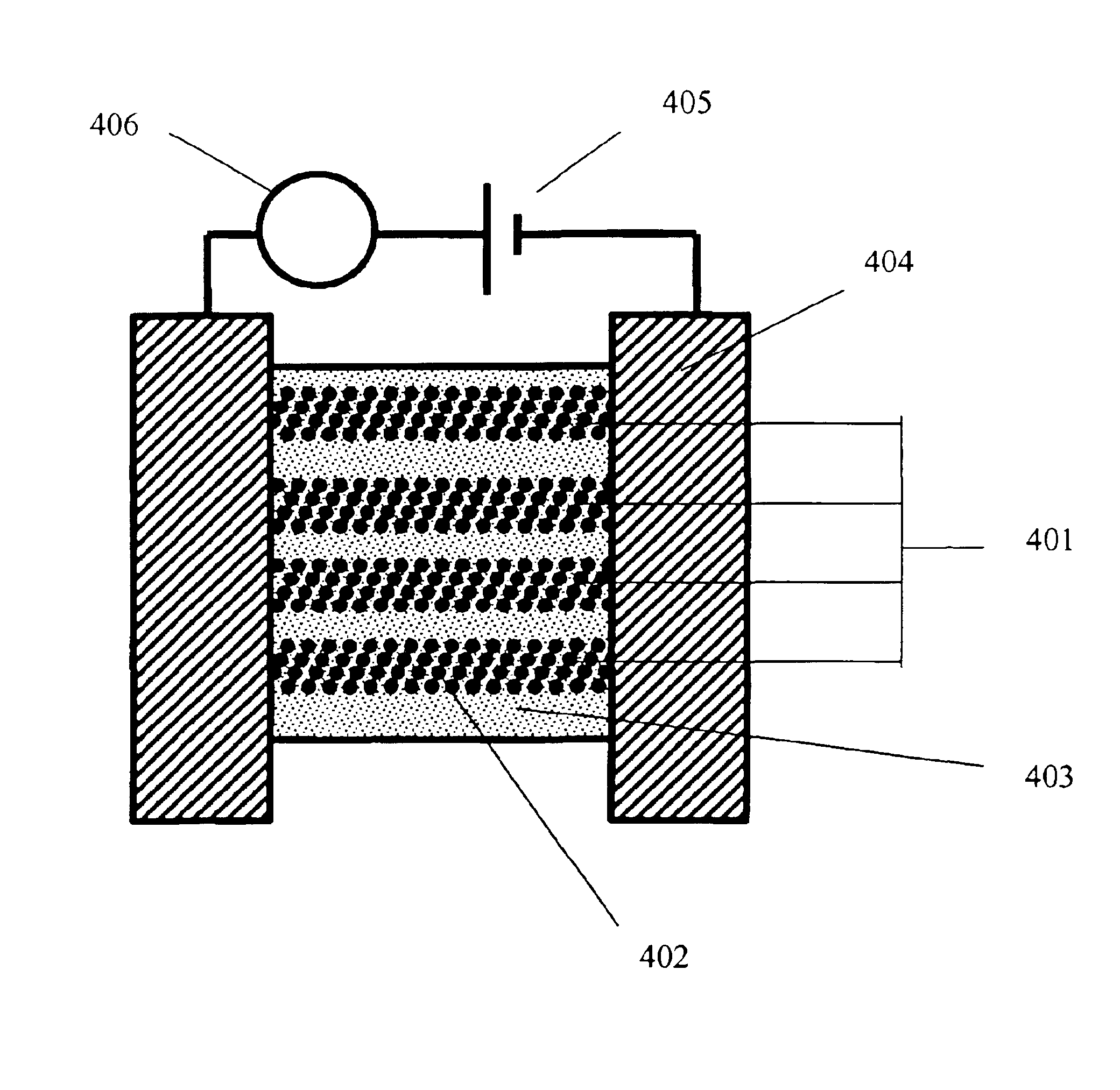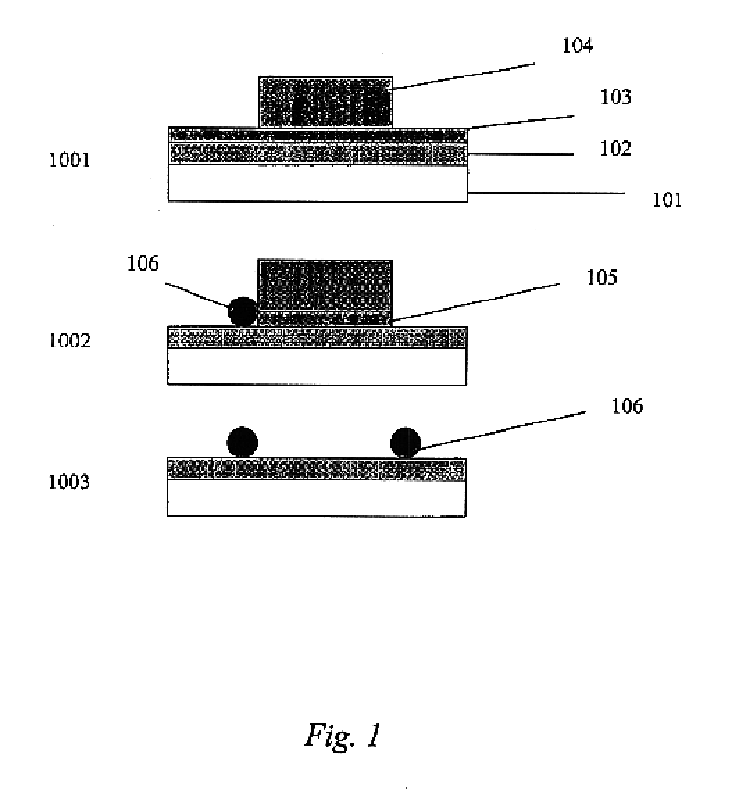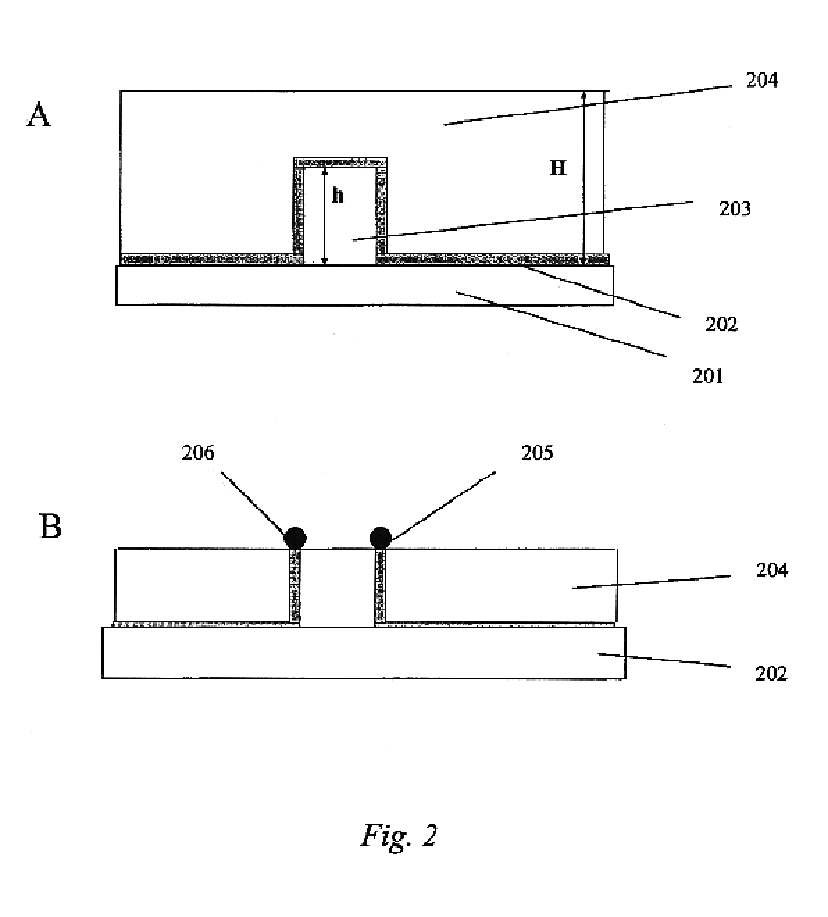Formation of metal nanowires for use as variable-range hydrogen sensors
a technology of variable-range hydrogen and metal nanowires, which is applied in the manufacture of nanostructures, instruments, and the construction details of gas analysers, etc., can solve the problems of reducing the resistance along the length of the nanowire, limiting the ability to pattern the nanowires, and relying on terraced graphite step ledges to form the nanowires. , to achieve the effect of reducing the resistan
- Summary
- Abstract
- Description
- Claims
- Application Information
AI Technical Summary
Benefits of technology
Problems solved by technology
Method used
Image
Examples
Embodiment Construction
The present invention provides for a method of generating metal nanowires on a surface, wherein the nanowires are grown with predefined dimensions, compositions, and orientations. Such metal nanowires are termed “precisely-defined” herein. The present invention is also directed to a variable-range hydrogen sensor comprising one or more precisely-defined palladium-silver (Pd—Ag) nanowires of variable composition and possessing nanobreakjunctions which are closed at a composition-dependent hydrogen concentration threshold. In some embodiments, an array of such nanowires of differing composition is used. In such embodiments, the nanobreakjunctions close (in sequential fashion) as the concentration of H2 is increased. Changes in an electrical property or properties (e.g., resistance) of these nanowires as a function of H2 concentration present, permits the sensing of H2 over a range of concentration. Such a variable-range sensor can even permit concentration determination when electrica...
PUM
| Property | Measurement | Unit |
|---|---|---|
| diameters | aaaaa | aaaaa |
| temperature | aaaaa | aaaaa |
| thick | aaaaa | aaaaa |
Abstract
Description
Claims
Application Information
 Login to View More
Login to View More - R&D
- Intellectual Property
- Life Sciences
- Materials
- Tech Scout
- Unparalleled Data Quality
- Higher Quality Content
- 60% Fewer Hallucinations
Browse by: Latest US Patents, China's latest patents, Technical Efficacy Thesaurus, Application Domain, Technology Topic, Popular Technical Reports.
© 2025 PatSnap. All rights reserved.Legal|Privacy policy|Modern Slavery Act Transparency Statement|Sitemap|About US| Contact US: help@patsnap.com



